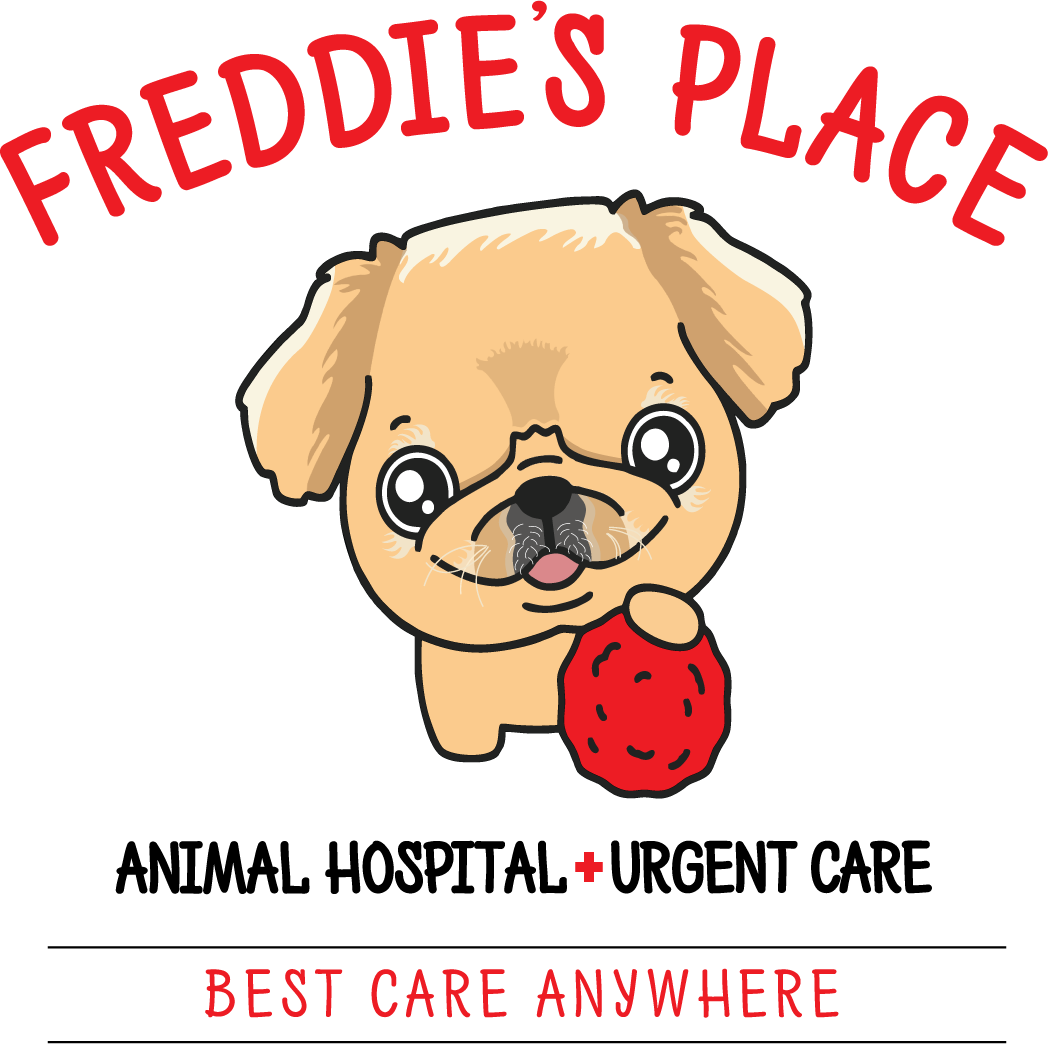 The Causes & Treatment of Your Pets Itching
The Causes & Treatment of Your Pets Itching
August is Itchy Pet Awareness Month, so the focus on dogs and the symptom of chronic scratching gave our #FreddiesSez the “paws” to dig deep into the subject. It’s important to reference that the symptoms we mention in this blog are not meant to act as a “professional” opinion, and if your dog has issues with excessive scratching, nothing replaces a wellness visit with a trusted veterinarian.
Do you notice your dog is licking, scratching, biting or chewing themselves, often to the point of bleeding? Do they scoot, roll on their backs, excessively rub on stationary items? Do they have recurring ear infections or have “crusty ear”? Do you see visible signs of hair loss, darkened on exposed skin? Are they losing hair or do you notice an odd and aggressive body odor that wasn’t there before? If you see these things occurring, your dog likely has a skin condition that needs immediate attention.
Studies show that about 10% of all dogs in the country have some underlying condition that is causing a level of discomfort that is accompanied by these symptoms. Considering there is somewhere between 76 and 90 MILLION dogs living in the United States, and around 50% of all households in the nation have a least one dog, a low estimate of dogs having some condition that makes them itch and scratch excessively is around 7.6 million impacted animals. Makes one scratch their heads… right? What could be causing this level of discomfort and impact to so many of our furry friends? The reasons are layered and sometimes you have to do some “Sherlock Holmes”ing to uncover the Moriarty in your Mastiff!
The most common reasons your dog is suffering in this way can be traced to two distinct categories, Allergic Dermatitis (skin allergies) and Skin Infections. To understand the difference, let’s look at each concern individually…
The most allergy related issue are driven by these factors:
Other skin problems could be linked to:
The impact of these issues, the itching and scratching, along with the other symptoms discussed above, can lead to huge changes in your pet. Pain, discomfort, and the constant need to attend to these areas of the body can cause a disruption in the animals routines and, in some, effect their personalities. A dog can become obsessed with biting and licking, become depressed from the non-stop symptoms, lose sleep, be in a consistent pain, lose the desire to eat, and avoid contact with those they love. If left untreated, some of the infections we discussed can lead to bigger health issues. Skin irritation and allergies can make your best buddy miserable and irritable. Wouldn’t you be?
What’s a Parent to Do?
If you see these signs in your pet, the best thing to do is see a professional for help. If your dog does not dig the veterinarians office, or doesn’t travel well, most vets have the ability to video chat in this modern age. Since a lot of the discussed symptoms are visible (redness, bumps, oozing skin, and rashes), along with detail you can provide, there are cases where the dog never has to leave the comfort of their home base to be seen and diagnosed. Sure, there are home and “over the counter” remedies you can try, but without a professional opinion and a true diagnosis, you are stabbing at a giant foe with a toothpick. Buck up and see your pets wellness provider, get the right treatments, which will provide a faster path to relief and a cure. Its a peace of mind action that you need to take to assure the right medications can quickly be administered to get your fur kids back to their normal selves.
If you’re set on doing it yourself, or can’t take on the burden of the vet visit right away, home remedies include things like oatmeal baths, special lotions designed to combat skin irritation, topical creams, but these normally only provide a temporary stopgap relief… if any. If you think that the issue might be food related, you can change up the diet. Keep in mind that only about 15 to 20% of all pet allergic skin disease is food related. Again, a vet can do testing to rule in, or out, food related allergies. Until you truly know what you’re dealing with, it’s hard to pinpoint a plan and cure for the issue.
Doctors Treatment Options
To help your vet with diagnosis, come to the table prepared with answers to questions they will most likely ask. Your knowledge of the pet and symptoms go a long way to help diagnosis and treat the problem and get the animal on the road to recovery. Some questions you might hear are;
- When did you first notice this and how long has it been going on?
- Do they pay attention to certain parts of their body more? If so, which ones?
- Is this change in behavior seasonal?
- How long do the itching fits last? Do they seem to be getting more frequent?
- Does it happen more often in certain areas of the home? Does it happen when they come back from outdoor play or walk sessions?
- Has anything in their environment changed? Food, cleaning products, shampoos or detergents?
- Have you treated for fleas on a regular basis?
- Does the itch interrupt the pets normal activities or routines? Do they see “off” or depressed? Has their mood changed?
Once your pets healthcare provider has done a full workup and has a diagnosis, they will likely prescribe one of two paths for treatment. They may opt to prescribe antihistamines, steroids, or a daily pill to treat the symptoms over a prolonged period. The other option is an injection that works to block urges to scratch and lick. This allows the irritation, rash, and redness to heal fully. Obviously, the diagnosis and other factors will go into a treatment plan that you can discuss with your wellness veterinarian.
Keep in mind that we are looking at only the most common reasons for the itch and irritation. There are other health issues that could lead to the need to scratch, lick or bite. Only a trip to the vet for a full checkup can get to the root of the cause and a well thought out plan for recovery.
It’s simple, if your fur buddy suddenly seems off, and shows signs of excessive scratching, biting, and licking themselves, there is reason to be concerned. But WHAT is excessive or too much? A good rule of thumb is to honestly answer the questions, “Are they damaging themselves?”, “Do I see the signs of skin irritation, bumps, or acute redness?”, and most importantly “Has this become intrusive in their life and have they changed?” An honest review and response to these key questions can lead you to decide what path is right for the individual situation.
That’s all for today’s deep dive into our response to Itchy Pet Awareness Month. This isn’t anything to scratch your head over, just look for the signs and take action when needed! Getting your fur kids back to their normal and happy selves should be reason enough to act.
Remember, the end of summer is coming fast, and with Labor Day comes another round of fireworks. Start now to prepare a plan on how your will protect your pets from the fear, reactions, and trauma that can accompany fireworks around your home. More pets run, escape, and are lost during nights of fireworks celebrations than any other time of the year. Prepare now and protect your pets. They are counting on you to act for them!
From our crew here at Fred Central, we wish you the happiness, fun, and good health in the week ahead. Until we meet again for our next Dog Blog we remind you to be safe, enjoy each others company, and above all be Pet Friendly… #FreddieSez!
Research Resources for this Blog Included





Leave A Comment